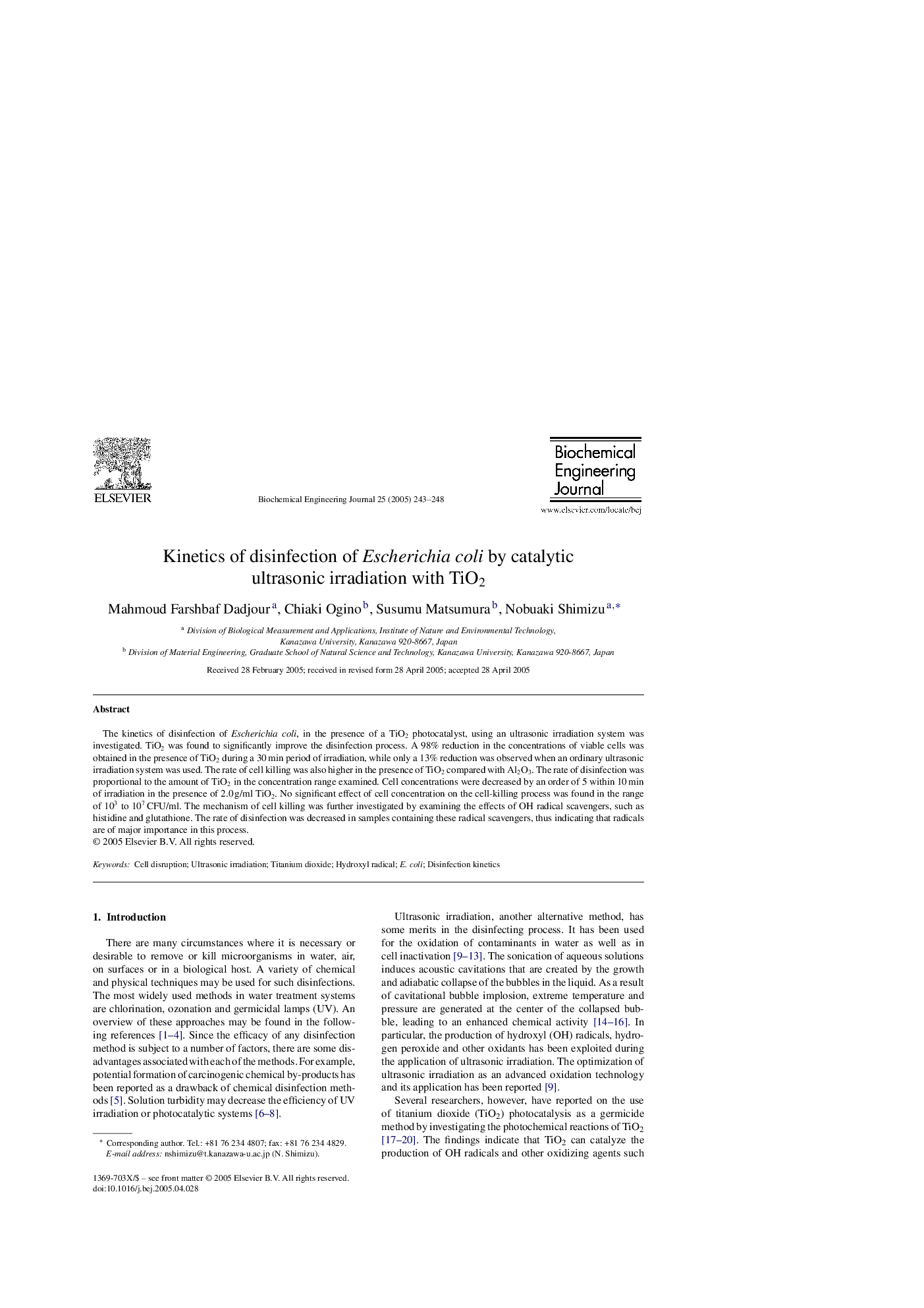| Article ID | Journal | Published Year | Pages | File Type |
|---|---|---|---|---|
| 10160790 | Biochemical Engineering Journal | 2005 | 6 Pages |
Abstract
The kinetics of disinfection of Escherichia coli, in the presence of a TiO2 photocatalyst, using an ultrasonic irradiation system was investigated. TiO2 was found to significantly improve the disinfection process. A 98% reduction in the concentrations of viable cells was obtained in the presence of TiO2 during a 30Â min period of irradiation, while only a 13% reduction was observed when an ordinary ultrasonic irradiation system was used. The rate of cell killing was also higher in the presence of TiO2 compared with Al2O3. The rate of disinfection was proportional to the amount of TiO2 in the concentration range examined. Cell concentrations were decreased by an order of 5 within 10Â min of irradiation in the presence of 2.0Â g/ml TiO2. No significant effect of cell concentration on the cell-killing process was found in the range of 103 to 107Â CFU/ml. The mechanism of cell killing was further investigated by examining the effects of OH radical scavengers, such as histidine and glutathione. The rate of disinfection was decreased in samples containing these radical scavengers, thus indicating that radicals are of major importance in this process.
Keywords
Related Topics
Physical Sciences and Engineering
Chemical Engineering
Bioengineering
Authors
Mahmoud Farshbaf Dadjour, Chiaki Ogino, Susumu Matsumura, Nobuaki Shimizu,
